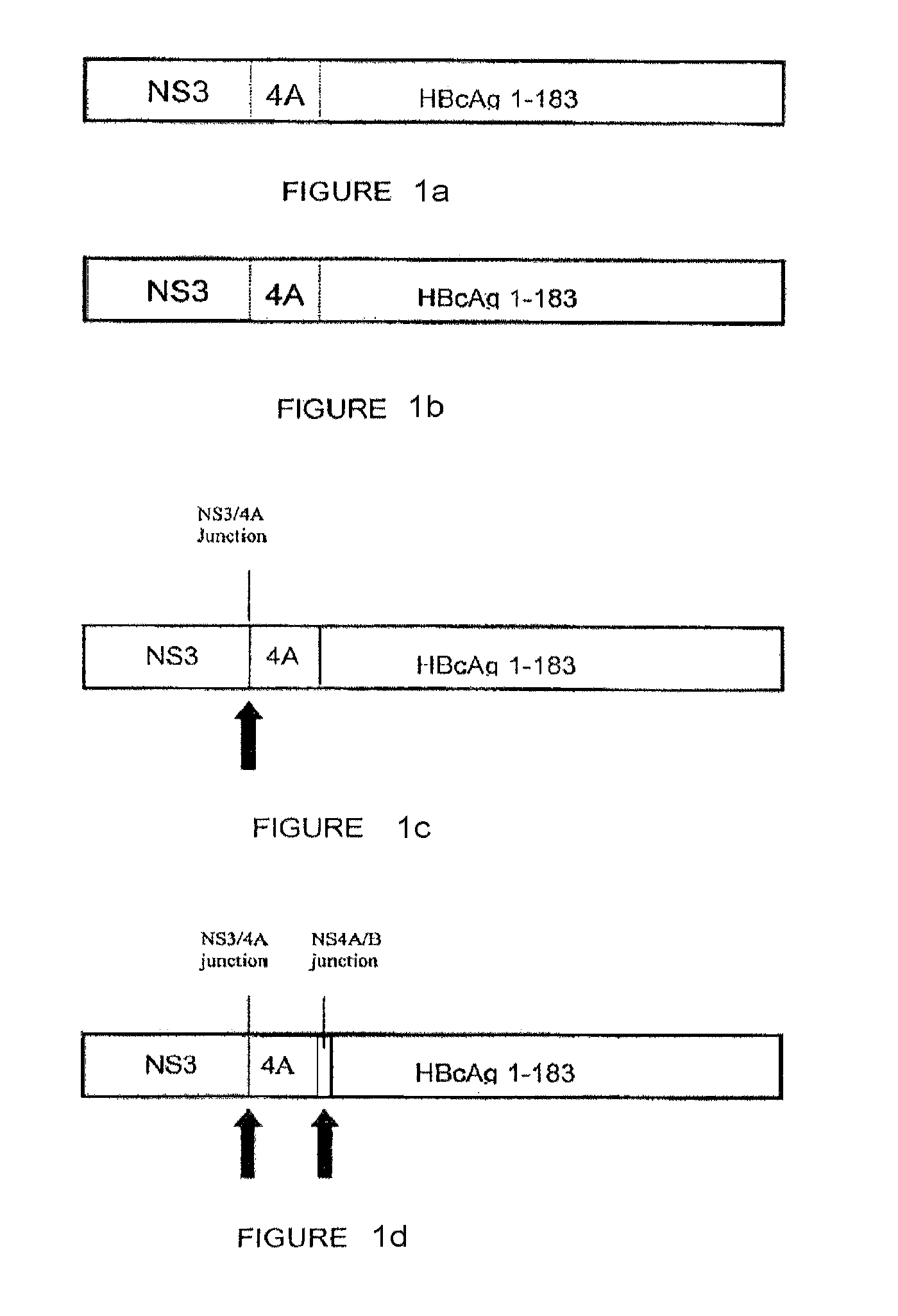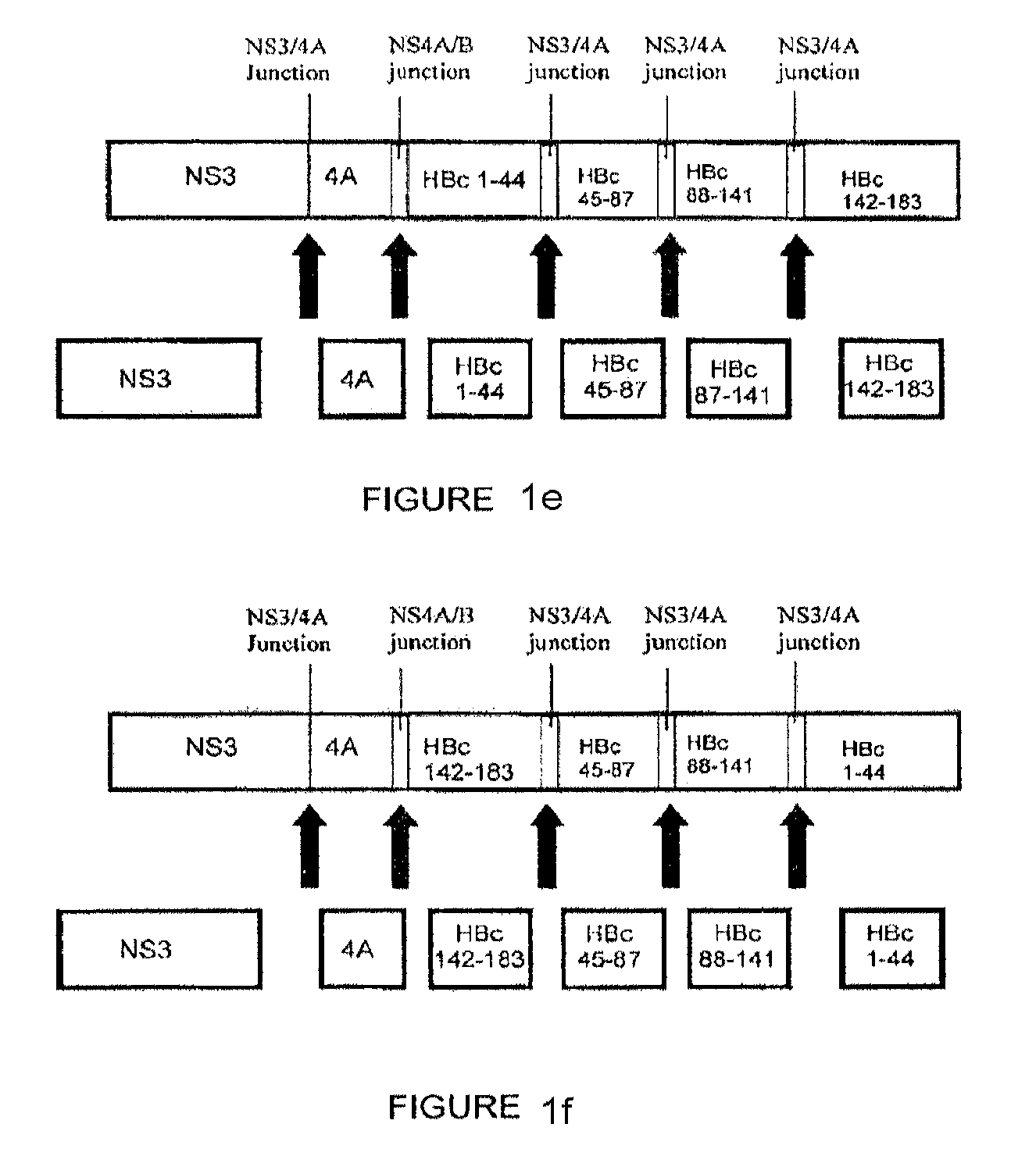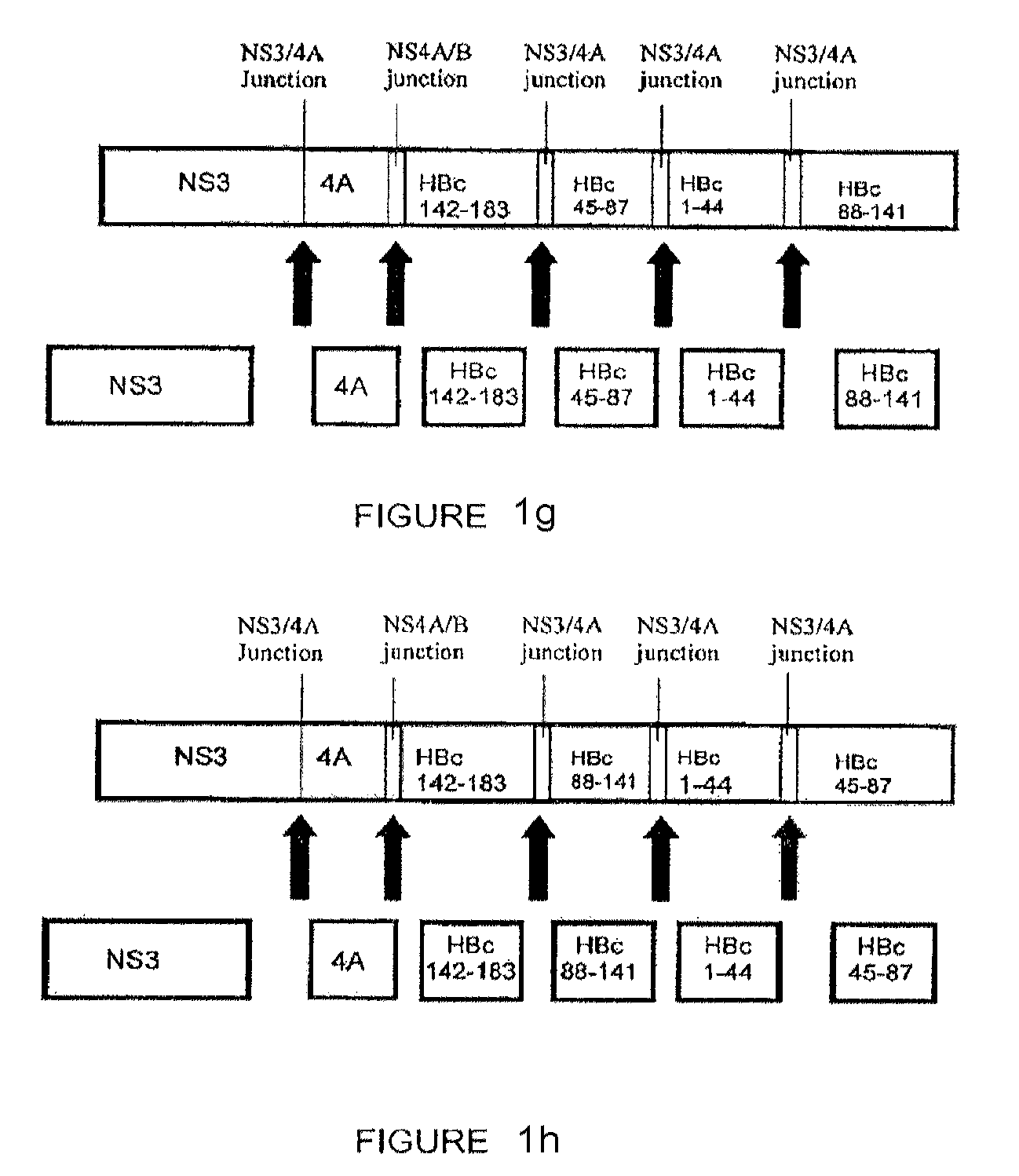Compositions and methods that enhance an immune response
a technology of immune response and composition, applied in the field of compositions and methods that enhance immune response, can solve the problems of ineffective strategies, poor immunogenicity of synthetic peptide vaccines, etc., and achieve the effect of improving enhancing the immune response of a subj
- Summary
- Abstract
- Description
- Claims
- Application Information
AI Technical Summary
Benefits of technology
Problems solved by technology
Method used
Image
Examples
example 1
[0144]The NS3 / 4A sequence was amplified from the serum of an HCV-infected patient (HCV genotype la) using the Polymerase Chain Reaction (PCR). Total RNA was extracted from serum, and cDNA synthesis and PCR were performed according to standard protocols (Chen M et al., J. Med. Virol. 43:223-226 (1995)). The cDNA synthesis was initiated using the antisense primer “NS4KR” (5′-CCG TCT AGA TCA GCA CTC TTC CAT TTC ATC-3′ (SEQ. ID. NO. 98)). From this cDNA, a 2079 base pair DNA fragment of HCV, corresponding to amino acids 1007 to 1711, which encompasses the NS3 and NS4A genes, was amplified. A high fidelity polymerase (Expand High Fidelity PCR, Boehringer-Mannheim, Mannheim, Germany) was used with the “NS3KF” primer (5′-CCT GAA TTC ATG GCG CCT ATC ACG GCC TAT-3′ (SEQ. ID. NO. 99) and the NS4KR primer. The NS3KF primer contained a EcoRI restriction enzyme cleavage site and a start codon and the primer NS4KR contained a XbaI restriction enzyme cleavage site and a stop codon.
[0145]The amplif...
example 2
[0148]To assess the ability of HBcAg DNA constructs to prime CTLs, the nucleic acid of SEQ ID NO:10 is cloned into the pVAX1 expression vector (Invitrogen, Carlsbad, Calif.) to create HBcAg-pVAX1.
[0149]Plasmids are grown in BL21 E. coli cells, and sequenced for accuracy. Plasmid DNA used for in vivo vaccination is purified using Qiagen DNA purification columns, according to the manufacturer's instructions (Qiagen GmbH, Hilden, FRG).
[0150]Groups of eight to ten C57 / BL6 mice are primed with HBcAg-pVAX1 intra muscularly (i.m.). For i.m. delivery, mice are immunized by needle injections of 100 μg plasmid DNA given intramuscularly to the tibialis anterior (TA) muscle. 5 days prior to DNA immunization, mice are injected intramuscularly with 50 μl per TA muscle of 0.01 mM cardiotoxin (Latoxan) in 0.9% sterile saline. The mice are boosted with a second injection of 100 μg plasmid DNA four weeks subsequent to the first DNA immunization. Each injection dose contains 100 μg of plasmid DNA. Imm...
example 3
[0152]The expression of the HBcAg and NS3 / 4a proteins from plasmids were analyzed by an in vitro transcription and translation assay. Each sequence was cloned into pVAX1 expression vector (Invitrogen, Carlsbad, Calif.).
[0153]The following constructs were studied: (1) codon-optimized NS3 / 4A (SEQ. ID. No. 2); (2) codon-optimized HBcAg; (3) NS3 / 4A-HBcAg (SEQ. ID. No. 73); (4) mutant NS3 / 4A-HBcAg (SEQ. ID. No. 75); (5) NS3-NS4A / B junction-NS4-HBcAg (SEQ. ID. No. 77) (6) NS3-NS4A / B junction-NS4-NS4A / B junction-HBcAg (SEQ. ID. No. 79); and (5-11) NS3 / 4A- NS4A / B junction-HBcAg fragments (SEQ. ID Nos. 81, 83, 85, 87 and 89, respectively) (hereinafter Constructs 1-11, respectively).
[0154]FIGS. 2a-b show the results of gel electrophoresis using 10% Tris-HCl SDS gel after 24 hours of exposure. The results confirm that constructs encoding cleavage sites were cleaved to form multiple, distinct proteins. For example, Construct 4 exhibits 2 sharp bands associated with two portions of the encoded p...
PUM
| Property | Measurement | Unit |
|---|---|---|
| concentration | aaaaa | aaaaa |
| concentration | aaaaa | aaaaa |
| concentration | aaaaa | aaaaa |
Abstract
Description
Claims
Application Information
 Login to View More
Login to View More - R&D
- Intellectual Property
- Life Sciences
- Materials
- Tech Scout
- Unparalleled Data Quality
- Higher Quality Content
- 60% Fewer Hallucinations
Browse by: Latest US Patents, China's latest patents, Technical Efficacy Thesaurus, Application Domain, Technology Topic, Popular Technical Reports.
© 2025 PatSnap. All rights reserved.Legal|Privacy policy|Modern Slavery Act Transparency Statement|Sitemap|About US| Contact US: help@patsnap.com



